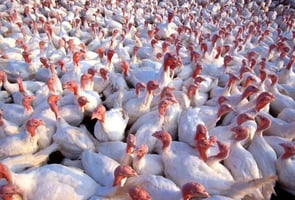Luke Bryan is a farmer. He is also this year’s American Country Music Entertainer of the Year. And...
What a Rip Off: Price Gouging in the Food Industry?

For consumers beset by higher prices, perception is often reality. Jamie Levitt drew a crowd around him after his seminar presentation recently at the World Ag Expo, as people were struck by his topic of discussion: potential price gouging in the food industry.
Levitt, an assistant professor of food science and nutrition at California State University, Fresno, was looking for input for a research project he’s starting on how perceptions mesh with reality when it comes to the retail price of groceries.
“There’s not a lot of research on this,” Levitt said. “Overall, the technical definition of price gouging is the act of charging unreasonable prices during emergencies or times of increased demand.” But sometimes people are simply frustrated or appalled by situations that may not meet the legal definition of price gouging. However, reports of one vendor at the Super Bowl charging $36 for a burger, “That’s price gouging,” he said.
Another source of consumer frustration can be a practice known as revenue management, in which businesses charge different prices for the same item at lunch and dinner or when people without access to a computer are forced to pay more for products, according to Levitt.
In some cases, the prices charged to consumers who decline to install a retailer’s app on their phone are “staggeringly different,” Levitt said. For seniors who aren’t tech-savvy, like Levitt’s 95-year-old grandmother, the disparity “can seem like ageism.”
“As a result, people feel like they’re being taken advantage of,” said Levitt. “A lot of the research that’s been done has not been done in connection with food.”
Levitt’s research proposal comes as the Biden administration recently criticized grocery chains over prices, accusing them of “ripping people off”. Biden said he’ll continue to put pressure on companies to moderate prices.
Consumers frustrated
A recent Axios Vibes survey found that 59% of respondents felt “angry, anxious or resigned” while shopping for groceries, and 72% said groceries are where they feel most affected by inflation. According to Bureau of Labor Statistics data, Americans spend $125.51 on groceries that would have cost $100 in 2019.
“Among the foods for which many consumers suspect they’re being gouged is eggs, which have more than doubled in price from 2022 to 2023 before easing,” Levitt noted. “In many cases, prices that rose because of avian flu or COVID-19-related supply chain snags never came back down,” he said.
While in many instances the rising revenue isn’t trickling down to farmers, who face their own increased costs for inputs, the trend could have implications for agriculture. As one seminar attendee noted, a ranch that forward contracts with a fast-food chain to provide meat for discounted burgers could be undermined if increased demand causes the chain to purchase more expensive meat on the spot market and raise prices to consumers, which would wind up stifling demand.
“Among other variables, rising prices could prompt consumers to buy products less frequently,” Levitt said. “In general, customers are not unreasonable. We want to know how strongly people feel. Are they willing to change brands? I want to do a study that has very clear implications for the food industry.”
EDITOR’S TAKE:
Nobody likes to feel as though they have been “ripped off”. That is especially true when it comes to something as basic as food. The U.S. still has the most abundant, clean, safe and reasonably priced food in the world. However, as Professor Levitt aptly points out, there are circumstances where people do feel or perceive being ripped off. If price gouging is occurring, then consumers should expect protection under the law. I can relate somewhat to the Super Bowl burger pricing situation. It took place in California at a large event where people were essentially “captive” once inside and charged extreme prices. That is, or certainly borders on, gouging. That aside, many instances are due to supply and demand factors that are beyond our control. Egg prices are a good example. Not only were there supply chain/distribution interruptions during the pandemic, but the Avian Bird Flu epidemic took millions of laying hens out of the U.S. flock. Thank goodness prices have moderated as the flocks now rebuild. This study may well shed some light on other factors we have not yet considered. In the meantime, inflation has driven food prices up and consumers are frustrated with making ends meet, which could equate to them purchasing fewer vehicles. However, on the bright side, thankfully farmers/ranchers continue to purchase the trucks and SUVs they need. Be sure your inventory is very visible on AgTruckTrader.com®.








